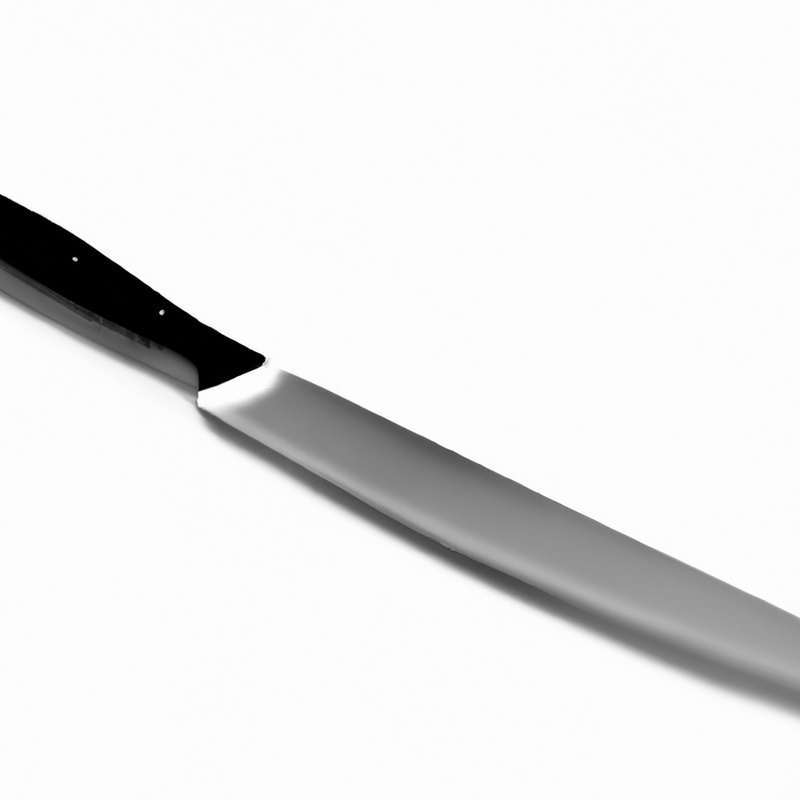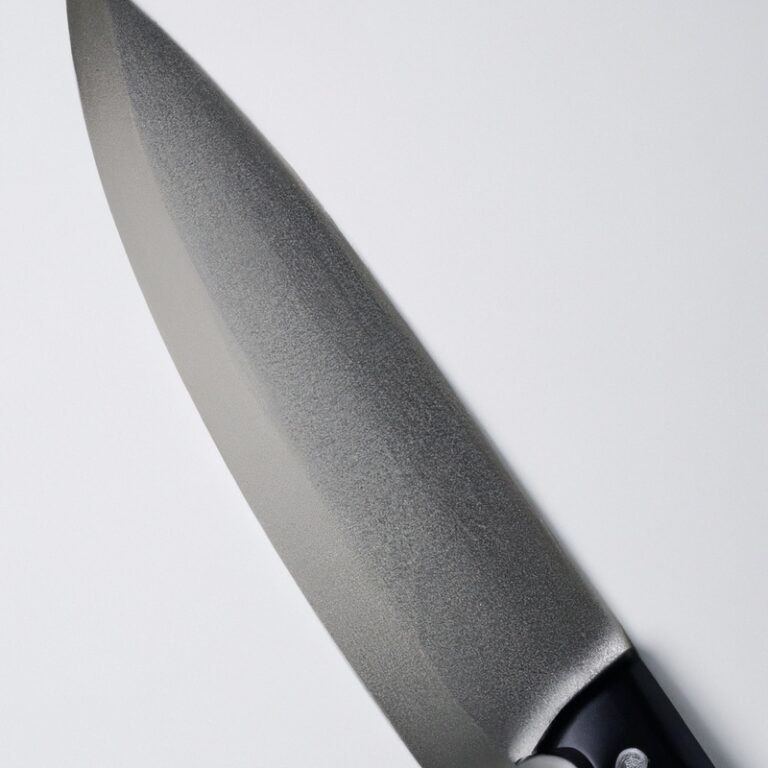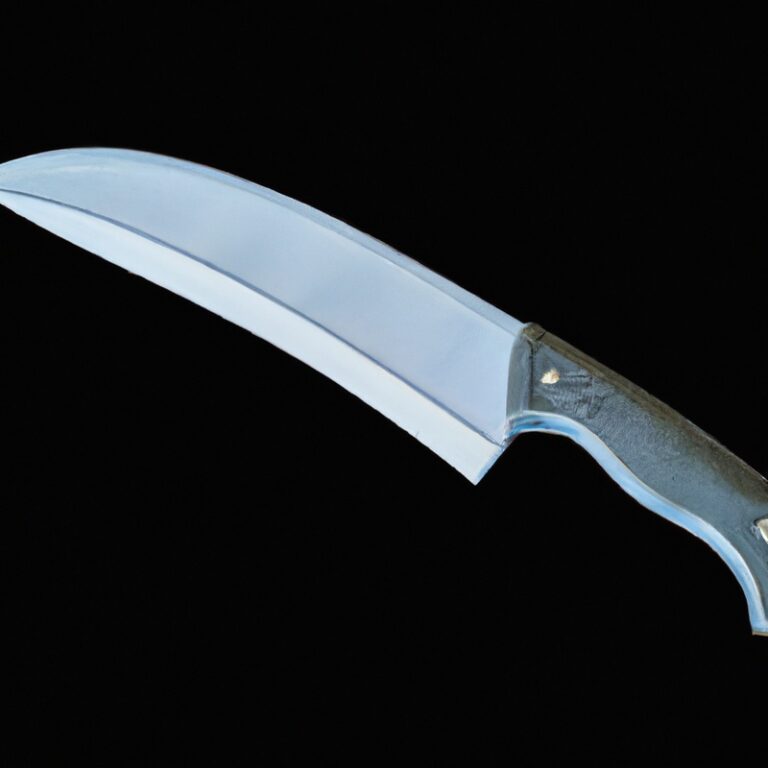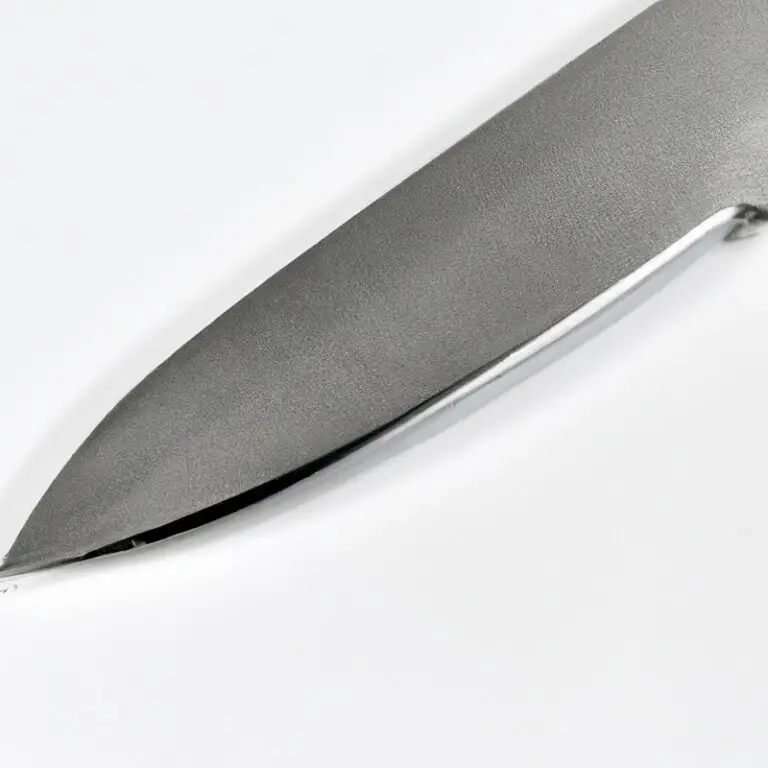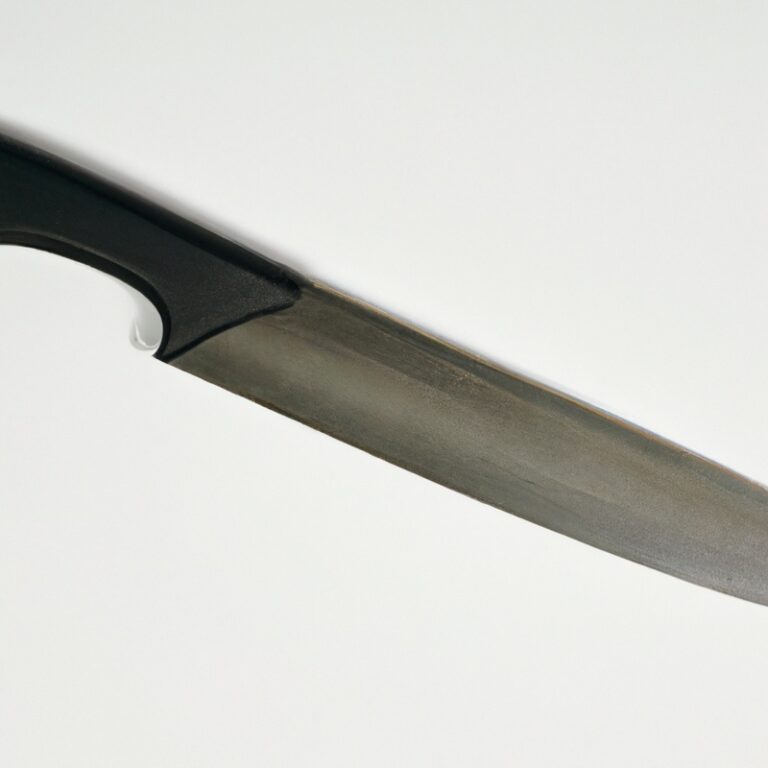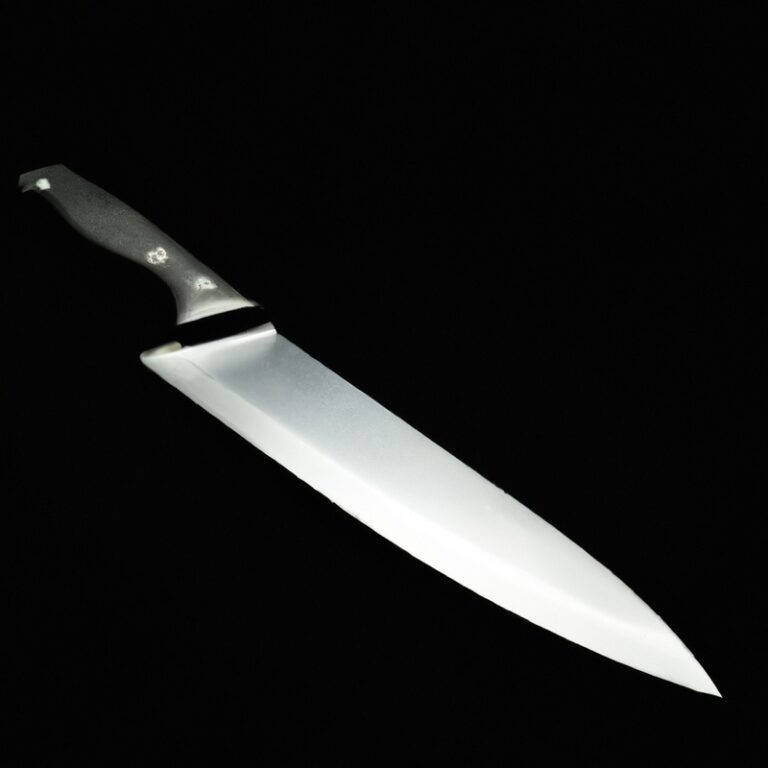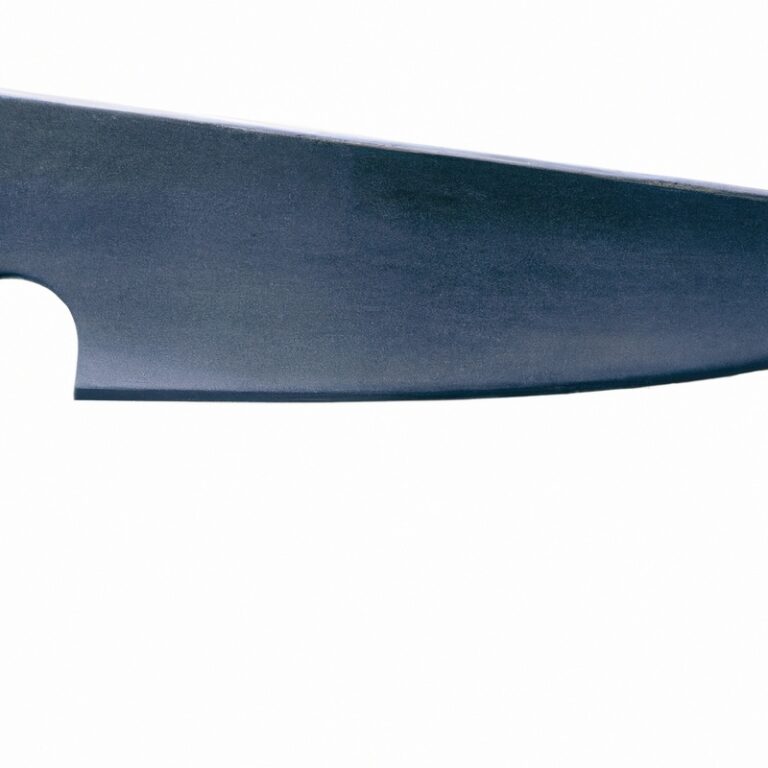What Are Some Alternative Uses For a Serrated Knife Beyond The Kitchen?
Key Takeaways:
- Serrated knives can be used for camping and outdoor activities, such as cutting ropes or branches.
- These knives are also useful in DIY projects, like cutting through tough materials such as cardboard or plastic.
- Serrated knives are excellent for gardening tasks, such as pruning small tree branches or cutting through thick stems.
- They can even be used for self-defense purposes in emergency situations.
Are you tired of your serrated knife being confined to the kitchen? Well, I’ve got some exciting news for you! There’s a world of alternative uses for this versatile tool just waiting to be discovered.
Whether you’re an outdoor enthusiast, a DIY enthusiast, or a creative soul, a serrated knife has so much more to offer beyond its culinary duties.
From camping trips and survival situations to arts and crafts projects, this trusty blade is a jack of all trades. So, grab your serrated knife and join me as I explore the endless possibilities that lie beyond the kitchen!
| Use | Description |
|---|---|
| Outdoor Activities | Can be used for camping, hiking, and survival situations to cut ropes, branches, or light-duty tasks |
| Crafts | Useful for cutting various materials such as foam, cardboard, and fabrics for DIY projects |
| Gardening | Can be used to prune plants, remove small branches, or for grafting |
| Opening Packages | The serrated edge is useful for opening sealed boxes, packages, and envelopes |
| Emergency Tool | Can be used as an emergency tool for cutting seat belts, ropes, or bandages |
What is a serrated knife?
Definition and characteristics of a serrated knife
A serrated knife is a type of knife that has a saw-like edge. It is characterized by its jagged teeth or notches along the blade, which enable it to easily cut through tough or crusty surfaces.
Serrated knives are commonly used in the kitchen for slicing bread, tomatoes, and other foods with a hard exterior and soft interior.
Due to their unique design, serrated knives are also useful in various other scenarios, such as outdoor activities, DIY and home improvement projects, as well as arts and crafts. Their versatility and ability to grip and cut through different materials make them a handy tool in a range of situations.
Alternative Uses for a Serrated Knife
Outdoor Activities
Outdoor activities provide numerous opportunities to make use of a serrated knife. For camping and hiking, a serrated knife can be essential for cutting through ropes, opening food packages, or preparing kindling.
In survival situations, it can be used for shelter building or cutting through tough materials.
In gardening and landscaping, a serrated knife is handy for cutting through roots, trimming branches, or dividing plants. So, whether you’re an avid outdoors enthusiast or simply enjoy spending time in your backyard, a serrated knife can be a versatile tool to have on hand.
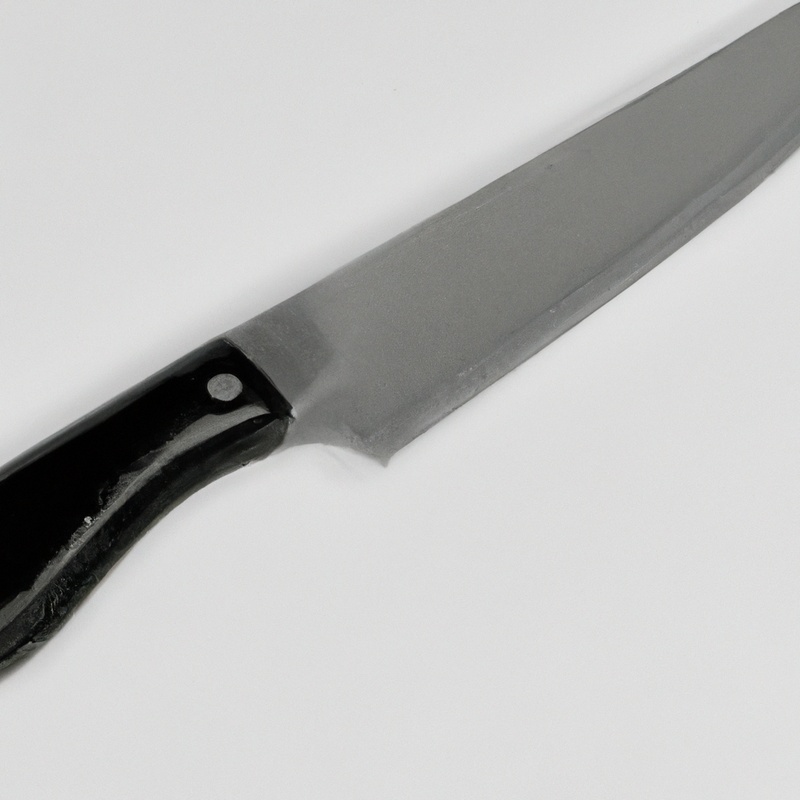
Camping and hiking
Camping and hiking are two outdoor activities where a serrated knife can come in handy. One of the main uses is for food preparation.
Whether you’re chopping vegetables or cutting up meat, the serrated edge makes it easier to handle tough and fibrous ingredients.
Additionally, a serrated knife can be used for cutting rope, trimming branches, or even sawing through small tree limbs. It’s a versatile tool that can make your camping and hiking experience more convenient and efficient.
Just remember to use caution and follow proper handling techniques to ensure safety.
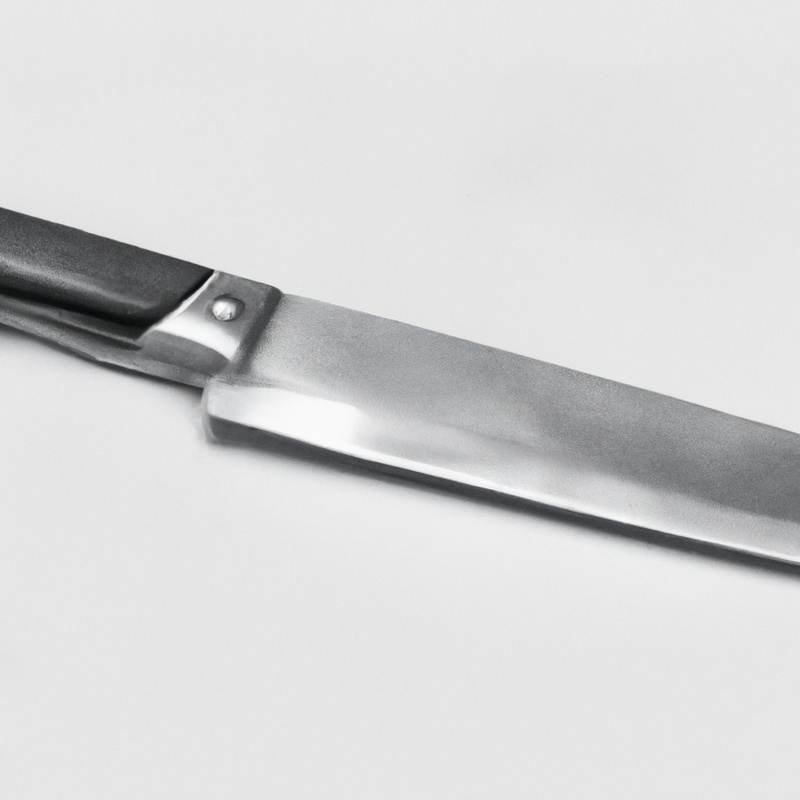
Survival situations
When you find yourself in a survival situation, a serrated knife can be an invaluable tool. Its sharp, jagged edge makes it ideal for tasks such as cutting through tough materials, like rope or fabric.
It can also be used to saw through branches and small tree limbs for shelter building or firewood.
Additionally, the serrations can help with tasks like carving and sculpting, allowing you to create tools or utensils from natural materials. Just remember to handle the knife with care, and always prioritize safety in any survival situation.
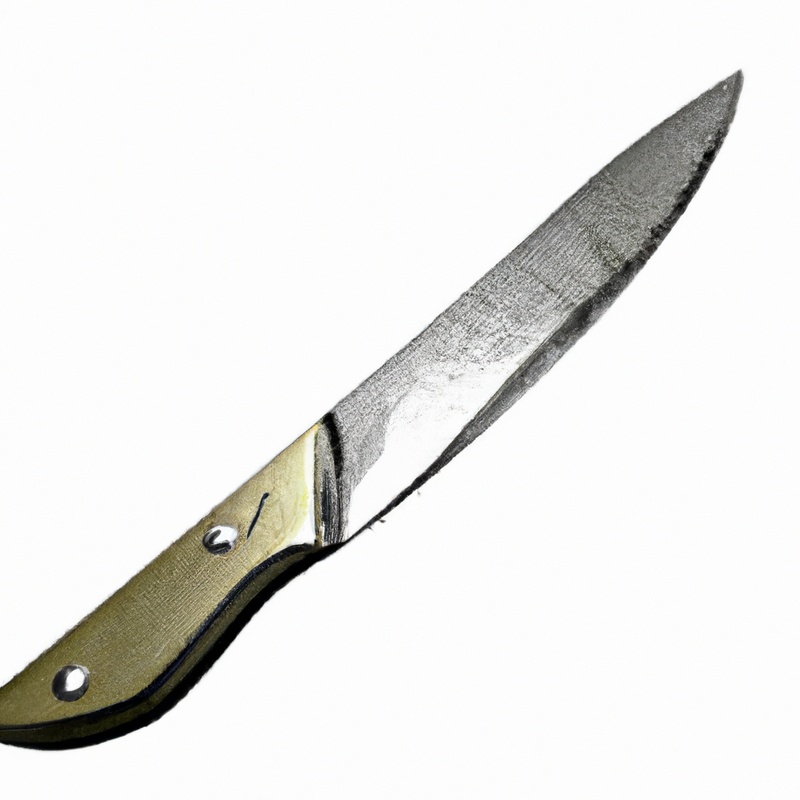
Gardening and landscaping
Gardening and landscaping tasks often require specific tools, but a serrated knife can come in handy for certain purposes. Its sharp, saw-like edge can be used for cutting string, twine, or plastic ties in the garden.
Additionally, it can be used for trimming small branches or roots when pruning plants.
The serrations make it easier to grip and saw through tougher plant material. However, it is important to note that for larger branches or tree limbs, a specialized pruning tool may be more suitable.
Always prioritize safety and be mindful of proper handling techniques.
DIY and Home Improvement
A serrated knife can come in handy for various DIY and home improvement projects. Here are some alternative uses for a serrated knife outside the kitchen:
- Cutting rope and fabric: The serrated edge makes it easier to slice through thick and tough materials like rope and fabric.
- Sawing through plastic or rubber materials: If you need to cut plastic pipes or rubber mats, a serrated knife can provide the serrated edge needed for efficient cutting.
- Trimming branches and small tree limbs: When pruning trees or shrubs, a serrated knife can help you make clean and precise cuts.
Remember to use caution and proper handling techniques when using a serrated knife for DIY and home improvement tasks.
Cutting rope and fabric
A serrated knife can be quite handy when it comes to cutting rope and fabric. The serrated edge of the blade helps grip onto the material, making it easier to make clean and precise cuts.
Whether you’re working on a DIY project, making repairs, or even using it for outdoor activities like camping or hiking, a serrated knife can be a useful tool.
Just be sure to exercise caution and use proper technique to avoid accidents.
Sawing through plastic or rubber materials
Serrated knives can be a useful tool for sawing through plastic or rubber materials. The saw-like teeth on the blade make it easier to cut through these materials without slipping or causing damage.
Whether you need to trim a piece of plastic for a DIY project or cut through rubber tubing, a serrated knife can provide the necessary precision and control.
Just make sure to use steady, even pressure and always practice caution when handling sharp objects.
Trimming branches and small tree limbs
Trimming branches and small tree limbs is another alternative use for a serrated knife. The serrated edge of the knife allows for easier cutting through wood, making it suitable for light pruning and trimming tasks.
However, it is important to note that a serrated knife may not be as effective as specialized pruning tools for larger branches or heavy-duty pruning.
Exercise caution when using a serrated knife for this purpose and consider using proper safety gear. Regularly sharpening the knife will also ensure optimal performance.
Arts and Crafts
Arts and Crafts offer a wide range of creative opportunities for using a serrated knife. One popular use is carving and sculpting various materials.
The jagged edge of a serrated knife allows for more precise and textured cuts, making it ideal for intricate designs.
Additionally, you can use a serrated knife for pumpkin and fruit carving, creating impressive patterns and shapes. Another application is in clay or pottery, where a serrated knife can add unique textures to your creations.
The versatility of a serrated knife makes it a valuable tool in the world of arts and crafts.
Carving and sculpting
Carving and sculpting are two creative activities where a serrated knife can be surprisingly handy. The jagged edge of the knife allows for better control and precision when shaping and detailing various materials.
Whether you’re working with wood, foam, or even soap, a serrated knife can help you achieve intricate designs and textures.
Use it to carve intricate patterns, sculpt small figurines, or add details to your artwork. Just make sure to use caution and start with a basic design before moving on to more complex projects.
Happy creating!
Pumpkin and fruit carving
Pumpkin and fruit carving can be a fun and creative way to decorate for holidays or special occasions. With a serrated knife, you can easily carve intricate designs or shapes into the pumpkin or fruit.
The teeth on the knife’s blade help to grip and cut through the tough outer skin, allowing you to create detailed and precise carvings.
Just make sure to use caution and take your time to avoid any accidents or injuries. So, grab a serrated knife and let your artistic side shine with pumpkin and fruit carving!
Creating texture in clay or pottery
Creating texture in clay or pottery is one of the many ways to add visual interest and depth to your art pieces. By using a serrated knife, you can achieve unique textures and patterns on the surface of your clay or pottery.
Simply press the serrated edge into the damp clay or pottery and gently drag it across the surface.
This technique can create a variety of effects, from rough and organic textures to more geometric and structured patterns. Experiment with different pressures and angles to achieve the desired texture.
Don’t forget to smooth any rough edges afterwards with a tool or your fingers.
Happy creating!
Miscellaneous Uses
Miscellaneous Uses: A serrated knife has several miscellaneous uses beyond the kitchen. One handy application is opening packages and boxes.
The teeth of the knife can grip and tear through cardboard easily.
Another use is cutting foam or insulation. The serrated edge helps in slicing through these materials smoothly.
Additionally, a serrated knife can be helpful in removing stickers or decals.
Its saw-like teeth can scrape away the adhesive without damaging the surface. These versatile uses make a serrated knife a valuable tool to have on hand for everyday tasks.
Opening packages and boxes
Opening packages and boxes is another alternative use for a serrated knife. The jagged edges of the blade make it ideal for cutting through various types of packaging materials such as cardboard, plastic, and tape.
Whether you’re receiving a delivery or unpacking items, a serrated knife can effortlessly slice through packaging materials, making the process quicker and more efficient.
This versatile tool can come in handy in your everyday life, beyond just the kitchen.
Cutting foam or insulation
A serrated knife can be a useful tool for cutting foam or insulation. The jagged edge of the blade allows for easy slicing through these materials, creating clean and precise cuts.
Whether you’re working on a DIY project or need to trim insulation for a repair job, a serrated knife can make the task quick and efficient.
Just be sure to exercise caution and wear protective gloves to avoid injury. Additionally, proper care and maintenance of the knife will ensure its longevity and effectiveness when cutting foam or insulation.
Removing stickers or decals
Removing stickers or decals can be a breeze with a serrated knife! Start by gently scraping the edge of the knife under the sticker, using the serrated teeth to grip the adhesive. Apply a little pressure and continue to scrape until the sticker starts to lift off.
If necessary, you can also use a bit of warm, soapy water to loosen the adhesive.
Just be sure to wipe away any excess water to avoid damaging the surface. With a serrated knife, you can say goodbye to stubborn stickers and decals!
Safety Tips and Considerations
Proper handling and grip
Proper handling and grip are essential when using a serrated knife for any purpose. To ensure safety and control, hold the knife with a firm grip, placing your thumb on one side of the blade and your fingers on the other.
This grip allows for better control and minimizes the risk of accidental slips.
Keep your fingers away from the serrated edges to avoid cuts or injuries. Remember to always handle the knife with caution and focus on maintaining a secure grip throughout your tasks.
Blade maintenance and sharpening
Blade maintenance is important to keep your serrated knife sharp and in good condition. Regularly clean the knife with warm, soapy water and dry it thoroughly to prevent rust.
Avoid using abrasive materials that can damage the serrations.
To sharpen the blade, use a specialized serrated knife sharpener or a round sharpening rod. Gently stroke the sharpener or rod along the serrations, making sure to maintain the original angle of the serrations.
Test the sharpness by cutting a piece of paper or a tomato.
Regular maintenance will ensure your serrated knife stays sharp and ready for use.
Final Verdict
A serrated knife is not just a tool for the kitchen. Its unique design and cutting ability make it versatile for various tasks beyond food preparation.
From outdoor activities like camping and gardening, to DIY projects and arts and crafts, a serrated knife can come in handy in many situations.
However, it’s important to prioritize safety by handling the knife properly, maintaining its blade, and storing it safely. So, next time you think of a serrated knife, remember its potential beyond the kitchen.
Don’t be afraid to explore and utilize its various alternative uses!

